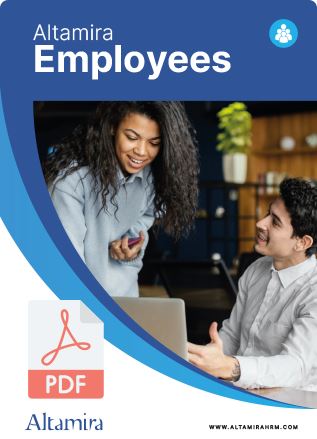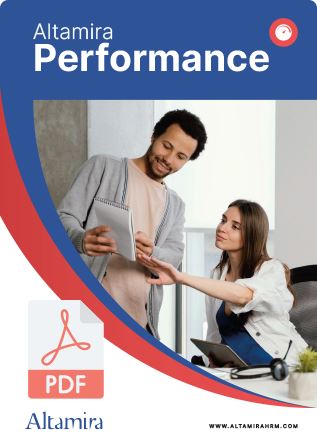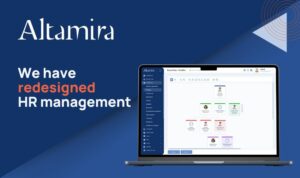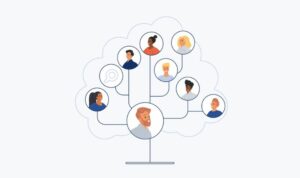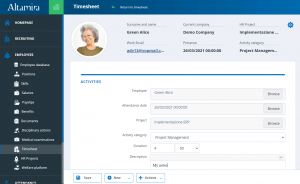Due to the rapid changes taking place in the world of work, training is probably the biggest challenge for companies and HR departments today.
They must provide the workers of the future with the means to continue developing their soft and hard skills (and digital skills, which can be both soft and hard) for their entire career path, or they will inevitably find themselves shut out of the labor market.
In order to meet this challenge, technology plays a major role. The use of a learning management system has become critical to the success of the training program, especially if it is able to support the HR department in the following 5 areas:
1. Management and development of skills
What is the ultimate goal of any training plan if not to develop the skills—both hard and soft—of the company staff?
Accordingly, it’s only normal to expect that a good learning management system should allow you to associate particular skills (for which you might also define different levels) with a course, and record these acquired skills for those who attended it successfully.
Then, it would be ideal for the internal training management system to also be connected with the personnel evaluation system. This will make it possible, for example, to use the courses as action steps in a development plan that you can propose to an employee to fill any skills gaps that have emerged from their evaluation.
2. Compliance with mandatory training requirements
A legal obligation for Italian businesses according to the Consolidated Safety Law (Legislative Decree No. 81/2008), compulsory training is absolutely insufficient by itself to ensure the continued growth of a company’s resources, which is essential for it to remain competitive.
Furthermore, workplace safety training is typically perceived as a waste of time by most employees, despite the fact that the number of workplace deaths in Italy continues to remain high.
It is, therefore, the task of the Human Resources office to ensure that compulsory training is respected and delivered efficiently, in order to both facilitate and engage the employees in the training as much as possible and recover useful resources for “non-mandatory” training as well.
To achieve this goal, the HR department must be able to rely on a training software that can:
- Identify figures in the company with safety roles and single out those who need to achieve the relevant certification.
- Keep track of the courses taken by each employee and the validity of the certificates.
- Send special notifications when the expiration date of a certificate is approaching and when a refresher course or a renewal is required.
- Provide the mandatory courses online (see the next point below).
Remaining in compliance with mandatory training requirements at all times will also protect the company from possible fines.
3. Provision of online courses
The debate is still ongoing about whether the effectiveness of online education compared to the classroom-based model is higher or lower, with an even balance between the two options which has led to the more widespread adoption of blended courses that leverage the strengths of both approaches to provide the best educational experience possible.
In any case, online training has a number of features that make it suitable for both non-mandatory and, most crucially, for mandatory training. Here are some of them:
- The content can be reviewed several times for better assimilation, on the schedule and in the manner which is the best fit for each individual employee.
- There are no travel costs or downtime.
- One can determine the quality and completeness of the course contents in advance.
- The offer of courses available is practically endless.
- It can be accompanied by objective tests that certify the assimilation of the content.
- It costs less than classroom-based education, especially on a larger scale.
Accordingly, a good learning management software must support the staff in the logistical organization of the classroom-based courses, and must also be able to manage a large catalogue of online courses.
4. Employee involvement
To be successful, a training plan must first of all actively engage the employees and turn them into the protagonists, guaranteeing the utmost transparency and ease of interaction.
Accordingly, it is a must to have a digital platform that would allow the employees, each with their own account and a dedicated personal area, to view the training plan, request participation in a course, download course materials, check the class schedule and their own attendance rate, etc.
They should be able to do this from anywhere, by logging in with their credentials from any device.
5. Creating reports and statistics
As in all other activities tied to Human Resources management, in the field of training there are more and more advantages to adopting a data-driven approach, which takes into account data, numbers and statistics and uses them to guide decisions.
As a result, the training software adopted by your company must be able to track and aggregate information in order to compile graphs and statistics that will help you understand whether the company’s learning program is being implemented successfully.
The software should offer not only KPIs tied to the budget, such as the cost of training per employee or per area, but also statistics related to the level of employee participation in the courses and their performance in the examinations, as well as reports on all the skills they acquired during the year.
The ability to present concrete and reliable data will make it easier for the HR department to highlight the role played by training in the company’s success.
Copyright: ©Stockwerk-Fotodesign/Fotolia.


